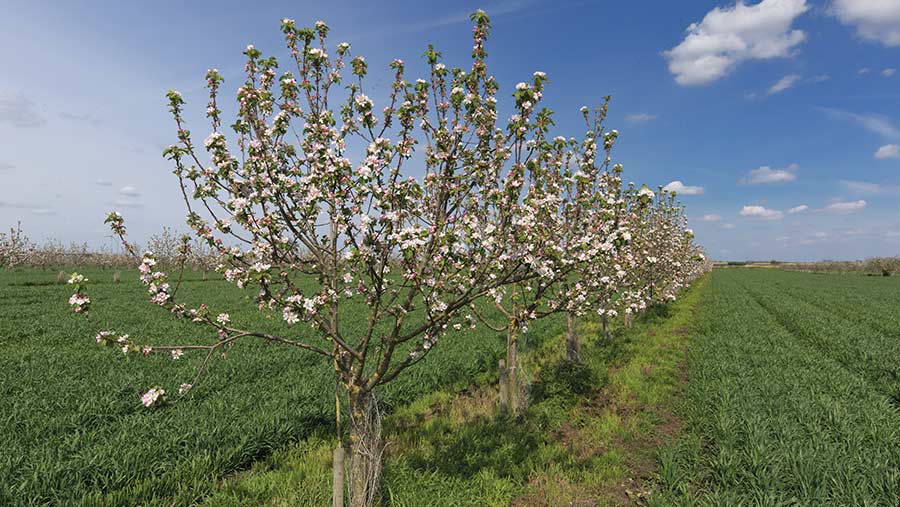Opinion: Agroforestry can deliver, but needs backing
 © Tim Scrivener
© Tim Scrivener Agroforestry has rightly gained greater attention of late – it has huge potential to deliver on carbon storage and contribute to net-zero tree planting targets, alongside woodlands and forestry, and climate adaptation.
This is in addition to significant nature, food production and ecosystem benefits, such as reducing soil erosion.
About the author
 Vicki Hird is head of sustainable farming at food and farming alliance Sustain.
Vicki Hird is head of sustainable farming at food and farming alliance Sustain.
Imagine the scale that could be achieved if significant numbers of farmers undertake elements of agroforestry. Currently, only 3% of the UK farmed area involves agroforestry. Yet the Committee on Climate Change recommends 10% of farmed land be converted to “silvo-arable” and “silvo-pastoral” use, which we suggest should be a baseline target, with more stretching targets being modelled.
This deliberate integration of trees and shrubs into farming systems brings a host of benefits, as identified by the Woodland Trust. Agroforestry systems can enhance farm productivity, increase wildlife and wildlife corridors, improve soil health, boost livestock welfare (with shade, shelter and forage), help manage water flow, and contribute to climate change mitigation.
See also: Should you consider agroforestry on your farm?
For this latter, critical goal, agroforestry systems have great potential to build carbon in each tree’s woody components and sequester it in the soil.
Research by the European Agroforestry Federation has demonstrated that, when planting at a density of 50-100 trees/ha, carbon sequestration is 1-4t of carbon/ha/year. For context, the average person in the UK is responsible for 5.5t of carbon dioxide emissions a year.
To make this happen, and to help farmers understand why and how to deliver agroforestry, we need an agroforestry standard to be built into Defra’s Sustainable Farming Incentive (SFI) scheme, as well as in the other components of Environmental Land Management (ELM).
Measures such as shelter belts, as well as silvo-arable and silvo-pastoral schemes, can be undertaken by any farmer and fit the SFI well. The local nature recovery and even landscape recovery parts of ELM could be used to support more complex and “at-scale” schemes, such as wood pasture.
The agroforestry standard and application process needs to be co-designed with farmers and agroforestry experts. Critically, it needs to be well promoted to all farmers, who may not naturally look at current woodland-creation grants. There is a real risk of confusion within the transition period.
We have already seen press reports that farmers find the England woodland creation offer off-putting, as it is based on applications for woodland creation. We need real agroforestry expertise to help drive this vital work.
Affordable or free advice, business support, demonstration and peer-to-peer learning will also be critical for agroforestry to grow through all the ELM scheme components.
Strong regulatory tools within one Defra body, not split between forestry and agriculture bodies, will also help to ensure better delivery of public goods from agroforestry – be that carbon sequestration, landscape, flood alleviation, soil protection, biodiversity and more. Any split would create confusion and incoherence on land use regulation and impact assessments. The last thing farmers should have to cope with is more complexity.
There is a justified and growing fear among farmers of a major land grab by corporate investors, wanting to plant trees to offset carbon emissions. Agroforestry can be a solution for them and deliver options for farmers in a time of great upheaval. They should be supported in the best ways possible to achieve this.
